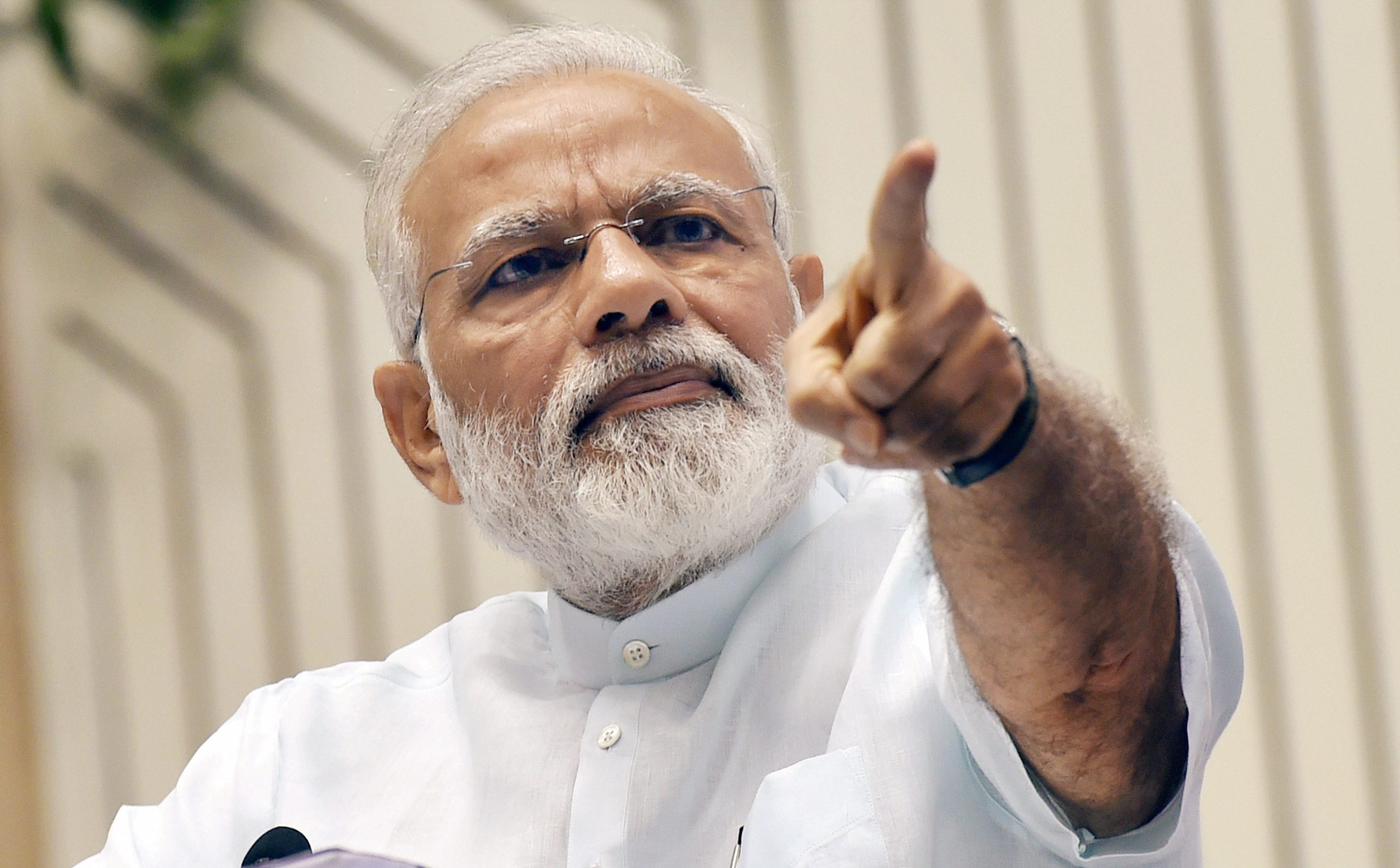Rating Modi Government’s Economic Policies
File photo of Prime Minister Narendra Modi at Civil Services Day 2017 function in New Delhi, April 2017. (Manvender Vashist/PTI)
Over the recent weeks, several assessments have been made of Prime Minister Narendra Modi’s economic policies. Significant reforms, among others, have included demonetization, push towards a cashless economy, implementing GST, recapitalization of public sector banks, making the real estate sector more transparent and amending the Insolvency and Bankruptcy Code, writes Siddharth Srivastava.
Recognizing some of the changes, credit rating company Moody’s Investors Service has upgraded India’s Sovereign Rating, strongly backing Modi’s structural reforms over the last three years. Moody’s raised India’s rating from the lowest investment grade of Baa3 to Baa2, and changed the outlook from stable to positive.
This is the first upgrade of India’s rating in 14 years. Backing the reforms push, Moody’s said, “The decision to upgrade is underpinned by expectation that continued progress on economic and institutional reforms will, over time, enhance India’s high growth potential.” Moody’s, however, warned that India’s rating could be downgraded if its fiscal consolidation deteriorates materially. “The rating could also face downward pressure if the health of the banking system deteriorated significantly or external vulnerability increased sharply,” it said.
The upgrade was naturally hailed by the establishment. “Many who had doubts about India’s reform process would now seriously introspect on their position,” finance minister Arun Jaitley said. Finance secretary Hasmukh Adhia tweeted, “The path that Government has chosen for long-term reforms and fiscal consolidation is well recognized by investors already. The rating agency too has now confirmed it formally, which is welcome.”
The Moody’s report follows India jumping up 30 notches into the top 100 rankings on the World Bank’s ‘ease of doing business’ index, due to major improvements in indicators such as resolving insolvency, paying taxes, protecting minority investors and getting credit. “The significant jump this year is a result of the Indian government’s consistent efforts over the past few years and India’s endeavor to strengthen its position as a preferred place to do business,” WB said in a statement.
India’s corporate law and securities regulations were recognized as highly advanced, placing it in fourth place in the global ranking on protecting minority investors. The time taken to obtain an electricity connection in Delhi reduced from 138 days four years back to 45 days now, against a 78-day average in OECD high-income economies, the report observed. This put India in 29th place in the category.
India still lags in areas such as starting a business, enforcing contracts and dealing with construction permits, the report said. “Evaluation for the ease of doing business ranking is very tough. The ranking does not reflect the reform measures unless the outcome is visible on the ground,” said Jaitley.
While Moody’s and WB chose to peg India on a higher pedestal, Standard and Poor’s (S&P) differed and kept the country’s rating unchanged at the lowest investment grade of BBB–, with a stable outlook, underlining a sizeable fiscal deficit, high general government debt and low per capita income. S&P, in a statement, said the stable rating outlook reflects its view that over the next two years, India’s growth will remain strong, it will maintain its sound external account position and fiscal deficits will remain broadly in line with expectations. S&P last upgraded India’s sovereign rating to BBB– from BB+ in January 2007. Economic affairs secretary Subhash Garg said S&P had exercised caution though it had views similar to Moody’s.
“S&P has assigned higher weightage to fiscal consolidation. I don’t see their focus on fiscal deficit of states to be sound. It is a judgment call,” he added. Rating agency Fitch, meanwhile, also chose to be conservative in its assessment of India’s economic progress and reforms. Fitch has cut India’s GDP growth forecast for the current fiscal to 6.7% from 6.9% and fiscal year 2018-2019 to 7.3% from 7.4%, saying economic growth has “repeatedly disappointed in recent quarters.” Fitch Ratings, also currently rates India at “BBB-minus” with a “stable” outlook, in line with S&P’s ratings.
“The Indian economy picked up in third quarter 2016-17 (July to September), with GDP growing by 6.3% year-on-year, up from 5.7% in second quarter 2016-2017. However, the rebound was weaker than we expected, and we have reduced our growth forecast,” Fitch said.
Fitch, S&P, Moody’s and the World Bank have had their separate takes on Modi’s policies so far. Some of the uncertainties about the future are perhaps reflected in the volatility in the Indian stock markets that have been clocking highs and lows within the course of the same week. Perhaps the best indicator of Modi’s reforms push will be in 2019 when general elections are due in the country. So far Modi looks to be the unassailable candidate to be PM again. Then again, in politics, nothing is certain until it happens.


